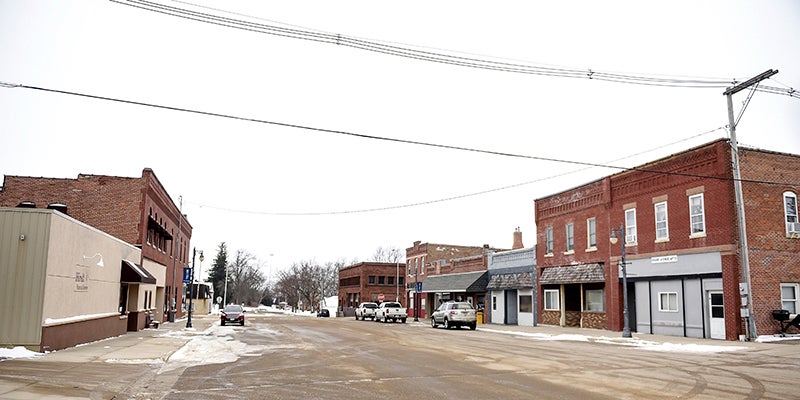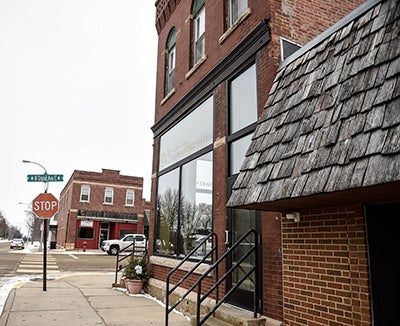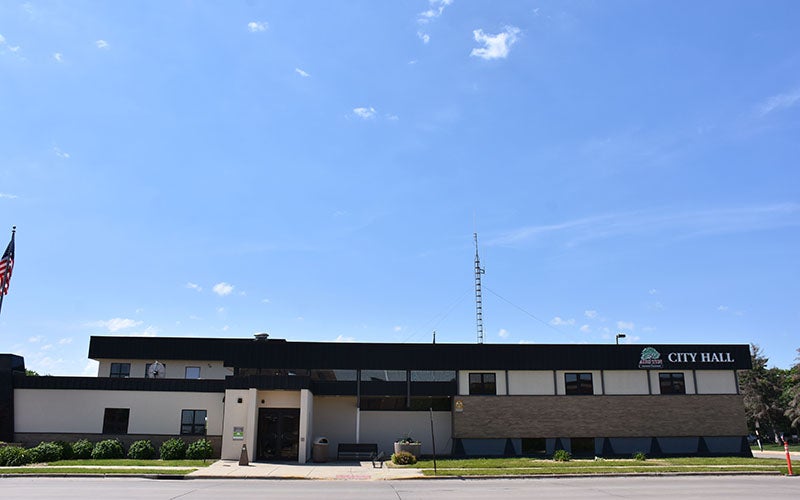PROGRESS 2021: Preserving historic properties (Grand Meadow)
Published 11:01 am Wednesday, March 3, 2021

- The grant for business owners in Grand Meadow rests on a hope to keep the unique feel of the community alive. Eric Johnson/photodesk@austindailyherald.com
|
Getting your Trinity Audio player ready...
|
SFIF Loan Program aiming to help restore Grand Meadow businesses
In an effort to help save deteriorating buildings in Grand Meadow, the Economic Development Authority (EDA) announced the Structure and Façade, Improvement Forgivable Loan Program in November 2020.
Under the program, $45,000 was set aside to allow for Grand Meadow businesses to make external maintenance and repairs to existing commercial buildings. Commercial business/property owners could apply for either a $5,000 or $10,000 forgivable loan (three available in each dollar amount) with the EDA matching dollar-for-dollar up to the maximum loan amount upon project completion.
The ultimate goal is to provide financial tools and assistance to property owners to repair and restore these properties to an era-appropriate look, helping the businesses create a safe, modern commercial space in Grand Meadow, according to Chris Hahn, EDA Director for Grand Meadow.

A grant program in Grand Meadow is helping business owners work with the historic feel of the community. Eric Johnson/photodesk@austindailyherald.com
“Grand Meadow has some truly unique and historic commercial buildings that we want to preserve and restore for the business community,” Hahn said. “We are also fortunate to have business owners that are committed to saving our historic commercial structures. Many of the available business funding programs are for renovation on the interior of a facility, but not the exterior, where our historic buildings need immediate attention. Some of these buildings are literally crumbling to the touch.”
To qualify, not only does the business have to be in Grand Meadow, but the property must be current on taxes and obligations with the city and at least 25 percent of total project funds must be used for street facing façade improvements. All projects must be completed with submitted invoices and completion photos within 12 months of the award date, unless otherwise specified by the EDA.
“Currently, we have received and reviewed four applications; two were approved and two have been tabled for further review to allow the owners, who happen to share a common-wall and roof, to collaborate as to what exactly their applications would cover as there was some overlap,” Hahn said. “We want to make sure everyone is on the same page and foster collaboration between all parties to insure the success of the projects.”
Hahn noted that the EDA has not yet turned down any applications, though it has informed applicants that certain parts of their application are not eligible for the matching grant funds.
Hahn highlighted the importance of programs like the SFIF Loan in helping small communities.
“In many of the small, rural communities in our area like Grand Meadow, there are beautiful, historically significant structures which have been covered with paint, stucco, or simply not maintained due to costly but necessary upkeep,” he said. “These types of programs help make funds available to restore some of these significant buildings in our town and provide our business community and entrepreneurs a space to grow.”
Hahn said the EDA is hoping to continue working to help Grand Meadow businesses.
“This program is only starting, but I would say that the Grand Meadow EDA is always looking to find ways to work with businesses and help them succeed through investment in our community,” he said. “These types of programs offer a win-win – business owners get some needed assistance for their business and the city benefits from a stronger, more viable business community that in this case preserves some of our iconic and historical buildings. That partnership is also evident in that his program is a 50/50 public/private match up to either the $5,000 or $10,000 loan amount.”





